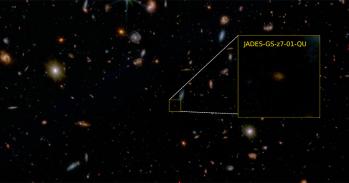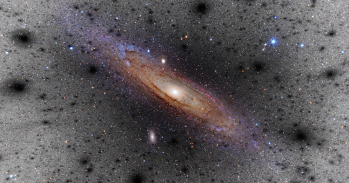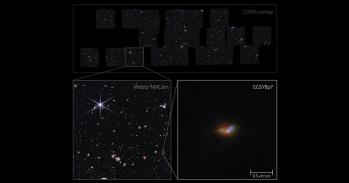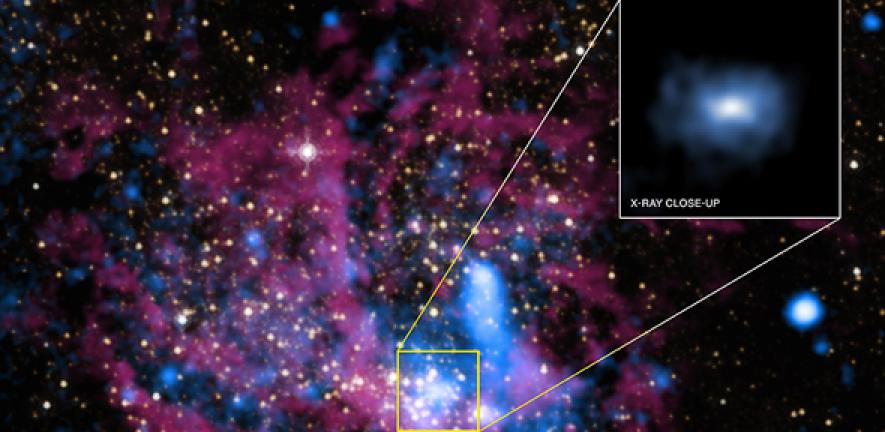
Astronomers working with NASA's Chandra X-ray Observatory have seen the giant black hole Sagittarius A* rejecting its ‘food’ of vast gas clouds as they aren’t sufficiently cool enough for it to swallow.
Astronomers working with NASA's Chandra X-ray Observatory have seen the giant black hole Sagittarius A* rejecting its ‘food’ of vast gas clouds as they aren’t sufficiently cool enough for it to swallow.
Sgr A* is one of very few black holes where we can actually witness the process
Q. Daniel Wang
The giant black hole at the centre of the Milky Way appears to be on a severe diet. Scientists have now taken a major step towards understanding why - with new data providing insights into the reason behind the lack of radiation from material near some black holes.
Latest research shows the black hole ejecting matter it has funneled towards its ‘event horizon’ – or point of no return – because it’s too hot and spread out, with less than 1% of possible matter in its gravitational pull actually being consumed.
The new findings, published today in the journal Science, are the result of one of the biggest observing campaigns ever performed by NASA’s Chandra X-ray Observatory.
Last year, Chandra collected about five weeks’ worth of observations on Sagittarius A* (Sgr A*) - the supermassive black hole located about 26,000 light years from Earth at the centre of the Galaxy.
Researchers used this extremely long observation to capture unprecedented X-ray images and energy signatures of multi-million degree gas swirling around Sgr A*, a black hole with about 4 million times the mass of the Sun.
“We think most large galaxies have a supermassive black hole at their centre, but most are too far away for us to study the flow of matter near the black hole. Sgr A* is one of very few black holes where we can actually witness the process,” said study leader Q. Daniel Wang of the University of Massachusetts, who was a visiting researcher at Cambridge’s Institute of Astronomy for some of last year where he worked on the research with co-author Professor Andy Fabian.
Chandra detects X-ray emissions from very hot regions of the Universe such as exploded stars and the matter around black holes. The data that came back from the Sgr A* mission showed that the X-rays were not, in fact, coming from a concentration of low-mass stars around the black hole as had been predicted. The X-ray images showed that the gas emissions around the black hole actually originate from winds produced by a disk-shaped scattering of young massive stars, as seen in infrared observations.
“This new Chandra image is one of the coolest I’ve ever seen,” said co-author Sera Markoff of the University of Amsterdam in the Netherlands. “We're watching Sgr A* capture hot gas ejected by nearby stars, and funnel it in towards its event horizon.”
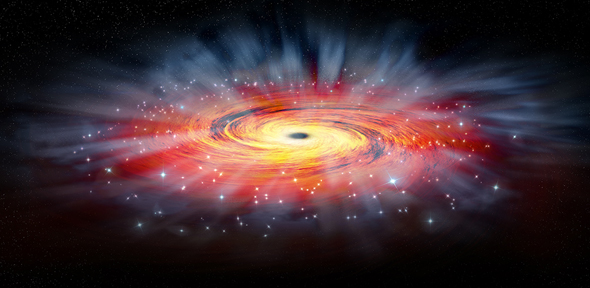
Illustration of Sagittarius A*. Credit: NASA Chandra
However, the authors say that less than 1% of the material initially within the black hole’s gravitational pull reaches its ‘event horizon’ because most of it is ejected.
Captured material needs to lose heat and angular momentum before it can plunge into the black hole, and the ejection of matter allows this loss to occur. Consequently, the X-ray emission from material near Sgr A* is remarkably faint - like most of the giant black holes in galaxies in the nearby Universe.
“Most of the gas must be thrown out so that a small amount can reach the black hole”, said co-author Feng Yuan of Shanghai Astronomical Observatory in China. “Contrary to what some people think, black holes do not actually devour everything that’s pulled towards them. Sgr A* is apparently finding its food hard to swallow.”
A key difference between supermassive black holes like Sgr A* and the voracious ones that power quasars and produce huge amounts of radiation is that the gas available to Sgr A* is very diffuse and hot, so it is hard for the black hole to capture and swallow. The gas reservoir of quasars is much cooler and denser.
Researchers hope this work will impact the efforts of radio telescopes to observe and understand the “shadow” cast by the event horizon of Sgr A* against the background of surrounding, glowing matter. They say the study will also be useful for understanding the impact that orbiting stars and gas clouds might have on matter flowing towards and away from the black hole.
Copy adapted from a press release issued by NASA’s Chandra X-ray Center in Cambridge, Massachusetts.
This work is licensed under a Creative Commons Licence. If you use this content on your site please link back to this page.


